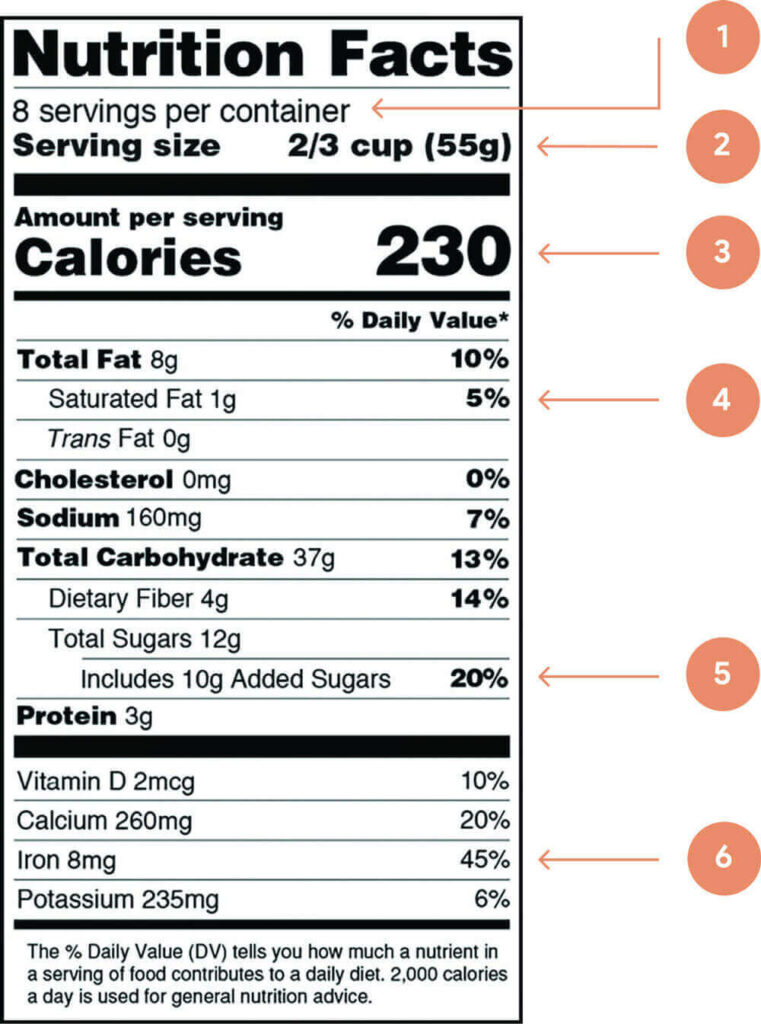How do you read food and beverage labels?
People with familial chylomicronemia (FCS) need to know what’s in their food and beverages.
Nutrition Facts labels show the nutrients in food and beverages. Learning how to read them can help people with severe hypertriglyceridemia (sHTG) make the right choices about what they eat and drink.
Here's what you need to know...

1. Serving size was updated in 2018.
New serving sizes better reflect the portions that people are eating and drinking.

2. Know what quantity the label is based on.
Serving size is the amount of the food or beverage that contains the calories, fat, carbohydrates, etc. listed on the label. In this example, a single serving is 2/3 cup. There are 8 servings total in the container.
3. Know the calories per serving.
This tells you how many calories you're consuming based on the actual portion you eat. For example, if you eat two servings, you'd double the calories listed here. You may want to discuss with a registered dietitian or doctor how many calories you need in a day.
4. Calculate total fat. Track it. Limit it.
A serving of this product has 8g of fat. If you can only have 4g of fat with this meal, you'd eat half a serving, 1/3 cup.
If you have sHTG, your doctor or dietitian can help you set a goal for how much fat to eat per day. For people with FCS, it is essential to know how much total fat is in a serving, so you can track and manage fat intake.
5. Limit Simple Carbs & Sugars.
Simple carbohydrates (like white bread and rice), as well as sugars (found in soda, fruit juice, candy, and syrups), digest rapidly. This may mean they won't leave you feeling full for a long time. They may also cause triglycerides to increase. Choose whole grain products made without fat (like whole grain breads, cereals, and brown rice).9,38
6. Be sure you get the nutrients you need.
Reduced fat foods may lead to low levels of some vitamins your body needs, such as vitamins A, D, E, and K as well as certain minerals. Work with a dietitian to ensure you're getting the nutrients you need.38
7. Now that you know, take control.
Work with a registered dietitian to create an enjoyable food plan that also meets your daily caloric intake and nutrient needs. Refer to food labels to make sure you're getting the nutrients you need and avoiding the things you don't.

For people with FCS, counting grams of total fat, total carbohydrates, certain vitamins (such as vitamins A, D, E, and K), and other nutrients remain the key to maintaining an FCS- friendly food plan.38

Important: If you have FCS, the percent (%) daily value is not a reliable way to track fat, calories, carbs, and other nutrients. It can even be dangerous. Instead, count or track the actual amount you are eating or drinking, limiting total fat to 20 grams per day.38
To help feel full longer, try eating foods that are high in protein and fiber but low in total fat, like those suggested in our Nutrition & Lifestyle Facts.
